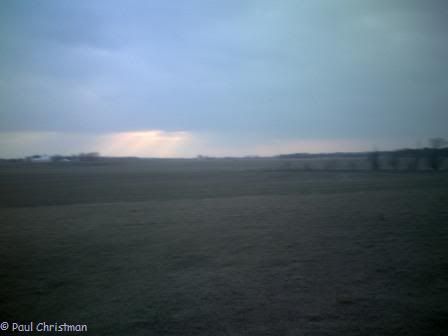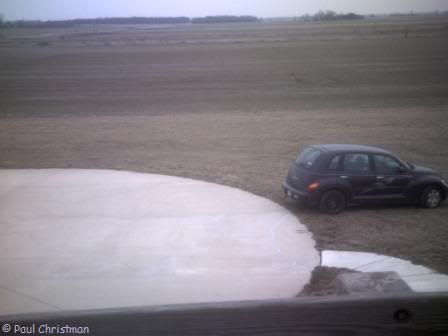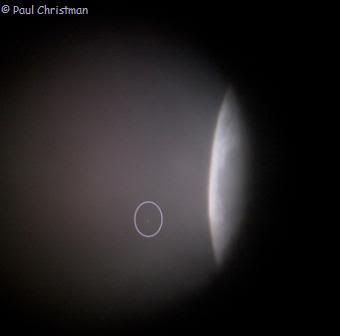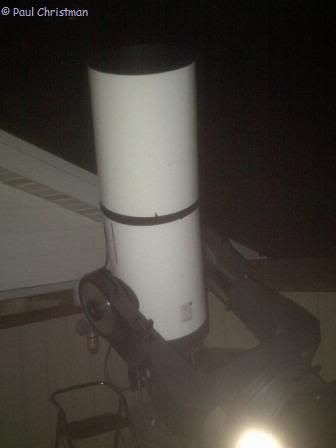Last Sunday, March 13, Chicago Astronomer Curt alerted us to a lunar occultation of Mu Geminorum. I wanted to observe it, especially since I had spent a week vacation vacation at home, with no observing time because of weather. On Sunday every forecast I heard on the radio or read online said that night was going to be clear, but what I saw outside and on the satellite images told me otherwise. I ignored my gut feeling, and drove out to Conway Observatory in Lowell, IN. I attended a training class last Friday and earned a key to the observatory. Since Sunday night was the last night of my vacation, and I hadn’t done any observing, I wanted to go out to the observatory and learn the 16” telescope there.
Images shortly after the emersion of Mu Geminorum, approximately 8 PM CST.
I arrived before 6 PM, but the afternoon’s clouds were refusing to depart. After surveying the premises and deciding not to set up one of my own telescopes on the observing pad, I went inside. I set up my computer and listened to some old observing podcasts to kill time. I walked through the observatory, mentally walking myself through the steps to open the roof and fire up the telescope.
Calumet Astronomical Society's Conway Observatory.
It was cloudy when I arrived.
I thought about setting up one of my own telescopes on the observing pad, but decided against it.
I checked conditions outside every so often, and just when I thought my drive had been for nothing, I saw the Moon shining through the clouds. I thought about opening the roof then, but noticed the time was 7:50. I double checked the emersion time: 7:53.
I went down to my car to set up my 6” Dobsonian, the easiest telescope to set up in a hurry. Still, by the time I was ready to observe, Mu Geminorum was already emerged from behind the lunar disk. Luna, relentless in it’s orbit, continued to move further east of the star. After getting a few images, I went inside the observatory, opened the roof, and proceeded to get familiar with the telescope.
It was hazy and cold, not good observing conditions, not to mention that the high, slightly gibbous Moon was casting a glow over much of the sky. Obviously, hunting down faint fuzzies wasn’t much of an option, and I didn’t want the hassle of star charts in the cold. I limited my observations to Luna and Saturn. Yes, I know: all that power and all I used it for was the two objects visible in the sky nearest to Earth. I felt it was observing time well spent, though, experimenting with the telescope controls and eyepieces. I’ll get back out there on a better night and play with the full power of the 16” telescope.
The 16" Meade LX 200.
Lunar image taken with the 16" telescope. The picture does not do justice to the view. I felt like I was standing on the rim of Copernicus looking down into the crater!









No comments:
Post a Comment